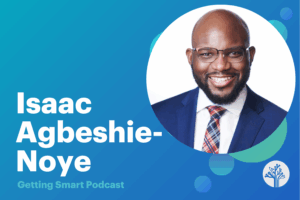Q&A: Online Environments Improve Professional Learning

Paul Lambert of an up-and-coming startup joins us today to share insights into his latest professional development and learning platform, Learndot. Learndot, formerly the new-age education platform Matygo, provides a flipped-classroom style learning environment for organizations who are looking for professional learning platforms to teach clients, customers, and employees new skills.
SC: How are online learning environments enriching professional development and delivery?
PL: Putting professional development and delivery online creates four major advantages:
1) Content: More of it, better quality, more personalized.
Lots of training is done in person with paper handouts. But with a video recorder and exporting those handouts to PDF you can bring everything online. Systems like Learndot allow for any learning content in digital form to be used in teaching. This means you can have the world’s best expert in X delivering your training through video, to as many people as needed. You have access to the vast amounts of data available online to be reused, remixed, and recycled – in addition to your own. Having all this data means you can deliver custom tailored learning experiences with ease.
2) More Reach
The internet is global. If you are a learning provider, putting learning online opens you to a global audience. If you have a distributed team, you can equally reach all of the through an online learning environment. Good online systems have granular access controls, so you can specify exactly what content reaches different audiences – audiences inside your organization, outside, customers, partners, any one of earth.
3) More understanding/measurement.
Offline professional development is notoriously hard to measure and receive meaningful feedback. There are the end-of class quizzes some learning designers call “happy sheets”, but often feedback rarely goes beyond that.
By delivering learning digitally you have much more opportunity for measurement, feedback, and improvement. You can measure nearly anything about the delivery: how people consumed the content, how long it took them, how well they understood it. This is an area we care deeply about. For example, Learndot has a ‘confidence score’ metric that we use to provideinsight into how well your content is being understood. This allows content producers to wisely invest their time and improve their work at a much higher pace (and with more confidence) than they could before.
4) Self-paced/independence
When considering an LMS, make sure it can handle self-paced learning. For most LMS’ this is an afterthought, but picking an LMS that’s learner-centric will ensure a great learning experience. By being self-pace and online, solutions like Learndot give autonomy to learners and open up previously unavailable time. Businesses don’t have to use prime work-hours for training delivery. Learners can learn at their own pace, and at their own convenience, which creates higher engagement and better learning outcomes. Moreover, content is easily accessed for reference even long after the training in complete, no more lost sheets and binders for learners.
SC: How can data on learner completion, understanding, and performance drive better learning materials?
PL: Insight into learner completion is pretty common in most online learning systems (or traditional LMS). But what’s much more important is insight into actual understanding and learner confidence. By clearly associating small pieces of content with how good it is at accomplishing its goal (the achievement of a learning outcome and learner confidence), a virtuous feedback loop is created. The quicker that loop, the faster learning materials creators can improve. Providing that insight is one of Learndot’s key differentiators. We believe that by helping learning materials creators improve their work and make smarter decisions we are empowering them in a way that hasn’t been done before. They will achieve their goals faster and fundamentally have a leg up over their competition who doesn’t have the same ability to effectively iterate quickly.
SC: How do programs like Learndot increase customer, employee, and partner fidelity/retention?
PL: The general principle here is that people like the things they’re good at.
- Employee retention and happiness is highly correlated to how well they are prepared for their job, or the quality of their training. Moreover, long/expensive or inconsistent on boarding throughout an organization can slow down a business and lead to long-term problems.
- Partner/Channel performance (volume and size of sales) is directly correlated to how well they understand the product theyare selling – channels that know more (the solution, why it’s valuable, and how to sell it) sell more.
- End-users & Customers will stick with solutions they’re good at. Product-based companies want all their users to be power users. Power users not only have very high retention, they’re also evangelical and tell the world about the product, either directly or through including on their resume. A common way of empowering users & customers is through creating a certification program around a solution, think a “Microsoft certified professional” for example.
SC: How does Learndot embody best practices in professional development training and courses?
PL: One of our key differentiators is that we are learner-centric. Everything we do around content creation, structure, and delivery is meant to help deliver learning that is more effective in achieving learning objects. We see our role as being the learning practices experts and building that expertise into our software so that Subject Matter Experts, who may not have instructional design experience but know their material, can use our system to still build effective courseware. That said, expert Instructional Designers can will find the system supportive and flexible so they can implement their own best practices faster than before.
As a concrete example, we divide all course content into modules called “concepts.” A concept has three pieces:
- A learning objective. This is to make the goal explicit to both the author and the learner.
- A short piece of learning content. This is the content being taught, but optimized into a bite-size piece as to not overwhelm the learner with information. For example, we recommend a video not be longer than 7 minutes and text shouldn’t be longer than a page.
- A self-reflection quiz. This quiz is not about being right or wrong, it’s formative assessment meant to prompt reflection and a deeper understanding of the material. By asking well-written thought provoking questions after each digestible content piece, the learner immediately engages with the material in a meaningful way and as a result has a much higher retention rate of the material.
This structure is not something we invented. We learnt it from an advisor who is a learning researcher at Princeton and has experimented with many different such structures. We have taken some of these, and other, results and applied them to our system so they can be used by non-experts who still want to be confident they are using learning theory best-practices. This is a fundamental difference between Learndot and LMSs: traditionally an LMS is just software to host content, any arbitrary content. They pride themselves on being able to host nearly anything. Their focus in on data. We are a tool to optimize learning, our focus in on people.






0 Comments
Leave a Comment
Your email address will not be published. All fields are required.